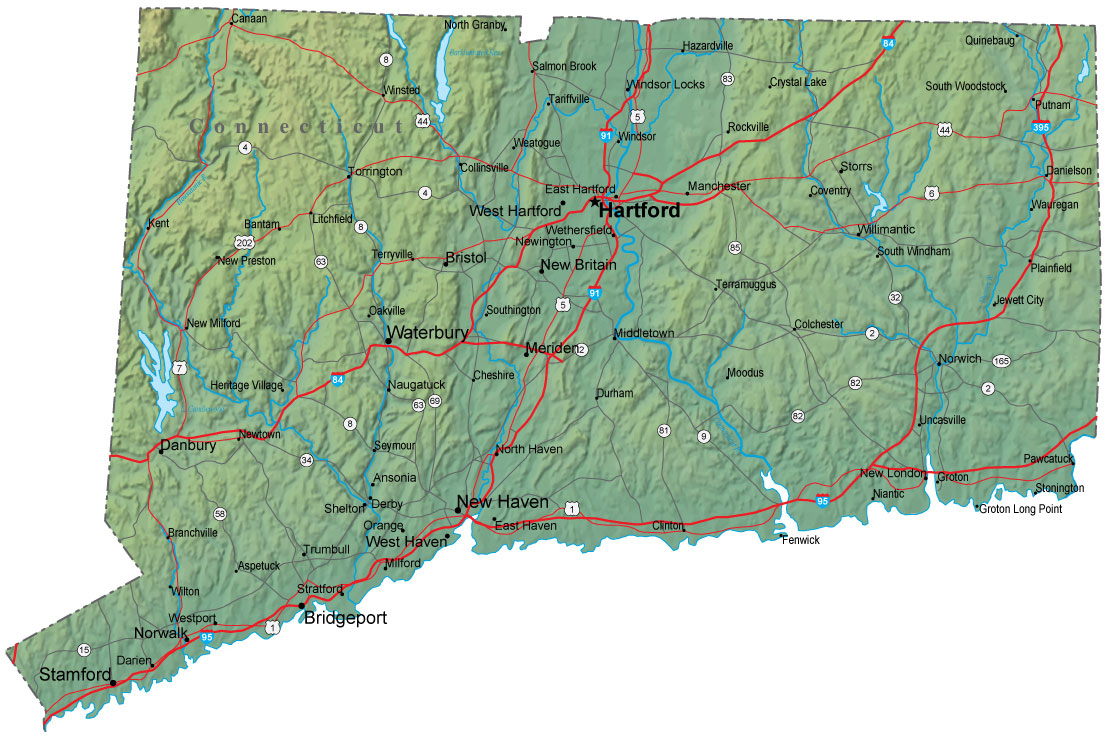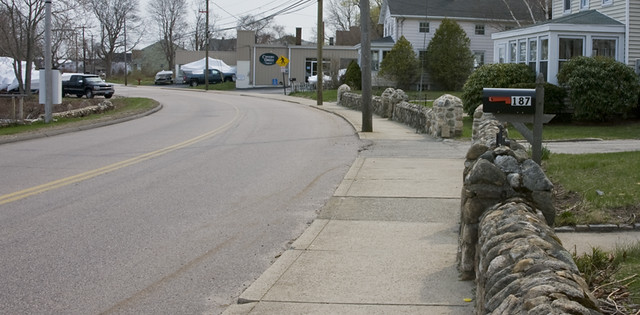Blue Highways: Verrazano-Narrows Bridge, New York
Unfolding the Map

Book Quote
"....Then a windingly protracted ascent up the Verrazano-Narrows Bridge (the Silver Gate of the East coast) with its world's longest center span, and below the bay where the Great Eastern, the Monitor, the Bonhomme Richard, and the Half Moon sailed.
"The low sun turned the Upper Bay orange. Freighters rode at anchor or headed to the Atlantic, and to the north, in the distance, a little glint of coppery green that was the Statue of Liberty. I slowed to gawk and got a horn; the driver passed in a gaseous cloud and held aloft a middle digit opinion."
Blue Highways: Part 9, Chapter 7
 The Verrazano-Narrows Bridge. Photo by Carl and hosted at Wikimedia Commons. Click on photo to go to host page.
The Verrazano-Narrows Bridge. Photo by Carl and hosted at Wikimedia Commons. Click on photo to go to host page.
Verrazano-Narrows Bridge, New York
More than any other city that I've visited, New York is connected as a city, an entity and a wider community through its bridges.
Recently, on a trip to Brooklyn with my wife for a friend's wedding, I was reminded of just how special the bridges in New York City actually are. My wife had never strolled across the Brooklyn Bridge, and so we took part of a day to walk across. For anyone traveling to New York, I would suggest you make that walk. It is on an elevated wooden walkway above the traffic, and the views are phenomenal. Just on a superficial level, if you want an amazing view of the skyline of Manhattan, the bridge is worth that walk across. But there are multiple levels. At each tower there are plaques that briefly tell the story of how the bridge was built, and the context of history in which it was built.
At the time the bridge was conceived, New York City was really just Manhattan. Brooklyn was its own city and political entity and in many ways a rival of New York City. A walk along the upper walkway takes one past a plaque that shows a woman representing the City of New York clasping hands with a woman representing the City of Brooklyn, with the bridge underneath, and the motto Finis Coronat Opus. The Latin translates literally into "the end crowns the work," but could mean "the end justifies the means" or "the end of a crowning achievement." Regardless, the Brooklyn Bridge paved the way for Brooklyn and New York to join together to create a greater New York. At this time, Queens, the Bronx, and Staten Island also joined.
Much of New York is on islands. Manhattan is its own island, separated from New Jersey on the west by the Hudson, and on the east from Brooklyn and Queens by the East River. To the south of Manhattan lies Staten Island, which is also separated from New Jersey on the west by the Arthur Kill and on the east from Brooklyn by The Narrows. There are 10 bridges connecting Manhattan to Brooklyn over the East River. There are fifteen bridges over the Harlem River, connecting Manhattan to the Bronx. There is one bridge over the Hudson River, the George Washington Bridge connecting Manhattan to New Jersey and four bridges connecting Staten Island to New Jersey. Staten Island is connected to Brooklyn by the Verrazano-Narrows Bridge. Of all the bridges, the Brooklyn Bridge was the first completed, in 1883, and the Verrazano-Narrows Bridge was the last major bridge to be completed, in 1964, spanning 81 years of a process where New York City connected itself together into the unified metropolis we now know. And all of this doesn't even count the tunnels that were dug under the rivers for traffic, train and subway service. Nor does it count the ferry services that existed before the Brooklyn Bridge, and which still operate as alternative ways to travel in the New York City area.
In fact, I'd argue that without the bridges, New York City wouldn't have become the major city that it is today. New York City is what it is because of the variety of its boroughs and neighborhoods within them. On my last trip there, I had the opportunity to spend a morning and early afternoon in the neighborhoods and more laid-back central areas of Brooklyn, getting the flavor of the place through its fine museum, its botanical gardens and its restaurants. Then, we walked across the Brooklyn Bridge into Manhattan, noisy, busy and constantly moving. We got above the hubbub on the High Line and enjoyed a less crowded, more peaceful walk through Chelsea, and then took a taxi up to to meet a friend in a high-rise and fancy apartment for drinks on 5th Avenue overlooking Central Park. We ended back up in Brooklyn by subway later that evening.
Staten Island, closer to New Jersey than the rest of New York City, has almost been a reluctant participant as a member of the consolidated New York City area, and indeed voted to secede from New York City in the 1990s. However, the vote was non-binding and the issues of Staten Island were resolved. Yet, even if the vote had carried some weight, I believe it would be hard for Staten Island to sever itself completely from New York City because of its connection through the Verrazano-Narrows Bridge and the Staten Island Ferry. It might be able to sever politically, but not necessarily culturally.
A bridge is a lifeline, an artery. We have sayings that reflect how important bridges are. We try to "build bridges" to span gulfs and bring us together with others on common ground. We try not to "burn bridges" with friends, colleagues and those we care about. In war, bridges are among the first primary targets, targeted to cut off routes and supplies to the enemy. When consolidating newly conquered territories, the conquerors often build bridges to enable the consolidation to take place.
I remember the movie Escape From New York, in which Manhattan is a large penal colony and all the bridges have been mined to keep convicts on the island. In I Am Legend, the Will Smith movie, as the contagion of the deadly virus spreads through Manhattan the military destroys the bridges in a futile attempt to keep the contagion on the island. The main theme in both of these films is that without the bridges, the New York City as we know it ceases to exist as an entity.
With so many bridges that that connect New York City to itself - to its boroughs and neighborhoods and all that is great about the place - it is easy to appreciate the role of a bridge, no matter how small or how large, how young or how old, how complex or simple the design. They allow us to access places not easily reached, and bring together disparate parts into unity.
Musical Interlude
I had hoped to find a song about bridges that matches this post. But I couldn't. A lot of songs have to do with building bridges or burning bridges. Some have to do with jumping off bridges. They really didn't feel right to me. The song I kept coming back to was a simple song by Steve Young that The Eagles covered, Seven Bridges Road. It may have nothing to do with the post, but I like it.
If you want to know more about the Verrazano-Narrows Bridge
MTA: Verrazano-Narrows Bridge
NYCRoads.com: Verrazano-Narrows Bridge
Verrazano-Narrows Bridge: A Brief History
Wikipedia: Verrazano-Narrows Bridge
Next up: Staten Island, New York




 Saturday, September 15, 2012 at 8:42AM
Saturday, September 15, 2012 at 8:42AM
